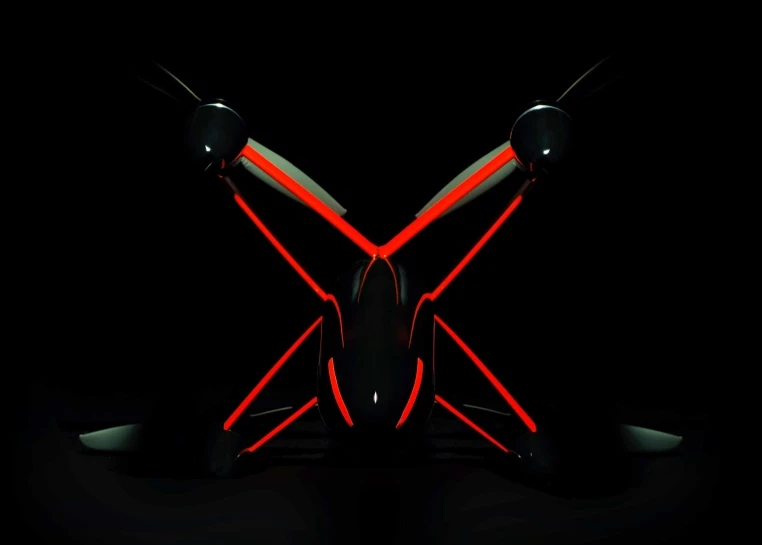Racing quadcopters are insanely light, quick and agile, but they're not typically known for their top-speed figures. Mechanical engineer and hobbyist Ryan Lademann builds his own frames to push the limits, and he's now bagged a Guinness World Record.
Lademann's XLR V3 drone, weighing just 490 grams (17.3 oz) looks a little different to most quadcopters, but very much still qualifies as one for record-setting purposes. Where most quads have a flattish brick of a chassis, the XLR's guts are stacked vertically, encased in a bullet-like aerodynamic shell. The motors get their own bullet-like nacelles as well, suspended from the main chassis on slim, low-drag struts.
With these nacelles pointed into the wind for aerodynamics purposes, the props are mounted underneath – so Lademann has built a little stand for the XLR V3 to sit on, and presumably launch from, without damaging the blades. It rises and hovers like a regular quadcopter, but when it's time to go fast, the pilot orients it horizontally and hits the throttle.
Lademann says his custom chassis, internal layout and construction are the secret sauce here; the electronics are off the shelf. That includes a Tattu R-Line 6S LiPo battery pack, Spedix ESCs, Cobra 2207 2450 kv motors, HGLRC Zeus Flight controller and video transmission systems, a Beitian BN-180 GPS, a Caddx Ant FPV camera and APC 5.2 x 6.0 props. Indeed, he helpfully links out to all these components from his project website, and at current prices you could buy all the electronic components for this drone for US$400 – including a set of $120 FPV goggles.

In order to set an official world record, the quad had to be flown in two opposite directions back to back to negate any wind assistance, with altitude kept level to negate any gravity assistance. Peak speed means nothing; each pass's speed is recorded as the average speed over at least a 100-m (328-ft) distance, and then the two opposing direction speeds are averaged for the final number.
Last November, Lademann, a professional witness and a small group of other enthusiasts gathered in Scottsdale, Arizona as the XLR V3 set a new Guinness world quadcopter speed record, at 224 mph (360.503 km/h). On an earlier flight, he recorded an instantaneous max speed of 257.25 mph (414 km/h).
Check out a short video below; it's not exactly Hollywood-grade to look at, since the drone is a fair way off the ground, the FPV camera is a tiny analog unit, and the ground camera is so far away that the quad barely registers on the screen. But it's an official world record, and the culmination of a project Lademann started way back in 2016.
Over to you, rest of the drone world – can you beat that?
Source: Quad Star Drones / Guinness World Records





